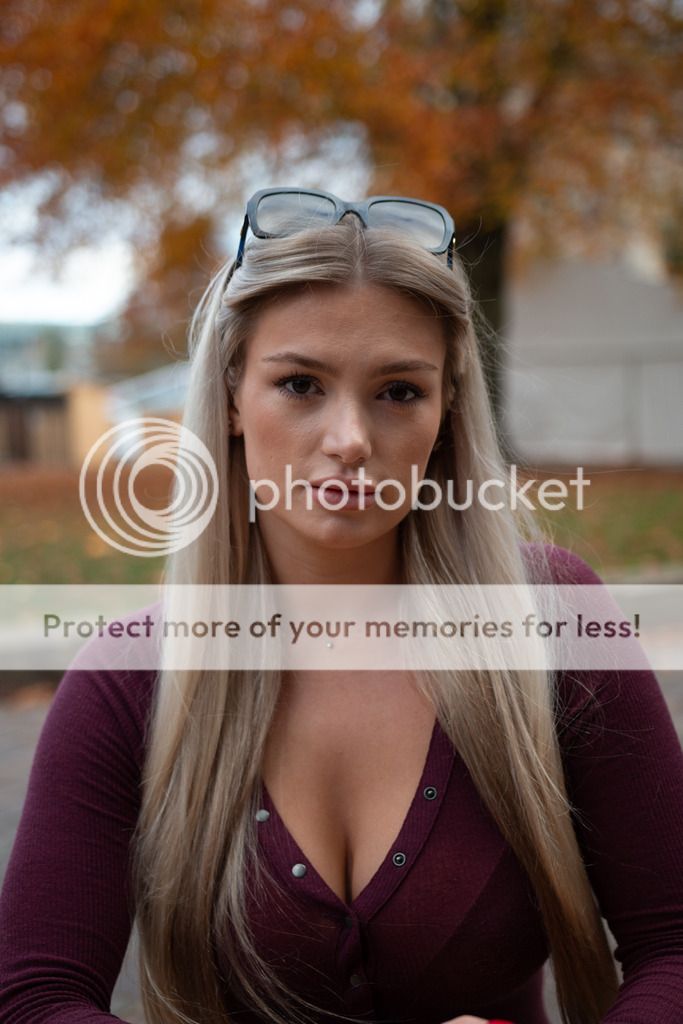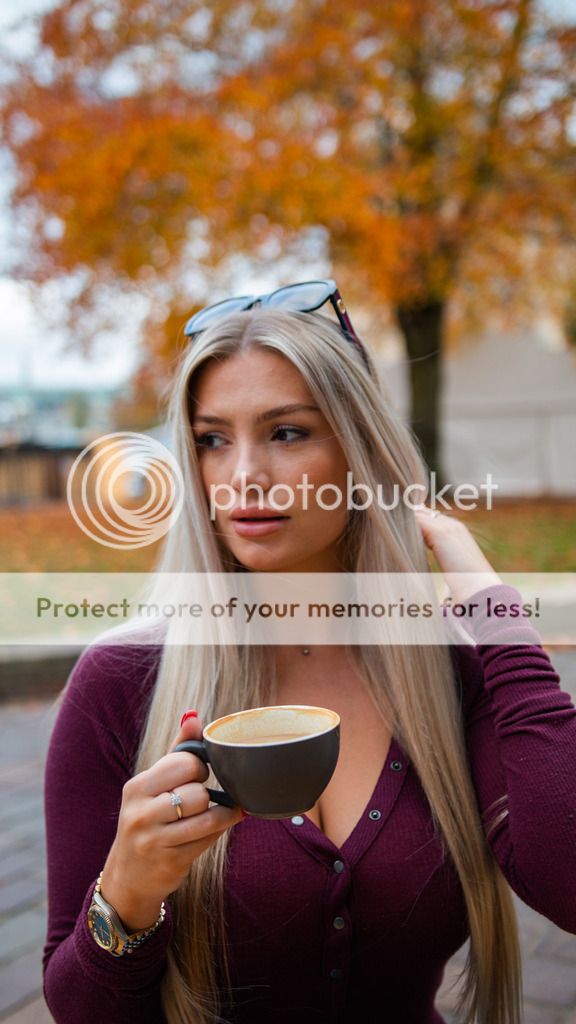Fuji Dave
I'm in Clover
- Messages
- 22,088
- Name
- Dave
- Edit My Images
- No
Oh god lol!
That`s why I said take your next shot on Full Auto, if it still does it then it`s got to be a fault somewhere I think.
Oh god lol!
Before I switched to BBF I would half press the shutter buttons, hear the beep and wait for the green light to come on so I know the subject is in focus
Now I’ve switched to BBF and when I press the new focus button there is no beep or green light so how do I know the subject is in focus
Phil answered that about 15 posts ago. Are you even reading the replies on here?
Here is a better photo guys
I wonder why the first photo I took wasn’t as good as focus as this?
One question I do have.
Before I switched to BBF I would half press the shutter buttons, hear the beep and wait for the green light to come on so I know the subject is in focus
Now I’ve switched to BBF and when I press the new focus button there is no beep or green light so how do I know the subject is in focus
I’m trying to mate. But a lot of the replies are people taking off topic. I’ll go back and look.
An idle moment with my cuppa.
What you are seeing sounds to me that you have combined AI Servo with BBF this combination is ideal for motorsport and wildlife......not for static portrait work.
In AI Servo the focusing does not lock and the shutter will fire without the focus locking. I suggest, if you wish, stick with BBF but do stop using AI Servo and go back to One Shot.
I feel I have interpreted the reason for your current ongoing problem......though perhaps I am still wasting my time
Edit ~ seeing Mark's @DemiLion post....yes, I recall Phil mentioned AI Servo,so take this as a nudge from me
15 posts ago he answered my question why there is no beep / green light.
My question is now I am on BBF how do I know the subject is on focus when I press the button?
Am I just trysting the camera ?
Take it off of BBF mate, not needed in your present situation, it’s more for moving, eractic subjects15 posts ago he answered my question why there is no beep / green light.
My question is now I am on BBF how do I know the subject is on focus when I press the button?
Am I just trysting the camera ?
So guys,
I have a private photography lesson in a few weeks.
What would you suggest I get her to teach me / show me.
I do know a little, but I am very far behind. lol
So guys,
I have a private photography lesson in a few weeks.
What would you suggest I get her to teach me / show me.
I do know a little, but I am very far behind. lol
I`d say the Basics. She will know what you mean.
Look at my advice higher in the thread @willkia - you MUST learn this first before you learn you camera!
Thanks I’ll have a look tomorrow on YouTube
I’m afraid I agree with you, I could never get on with shutter button focus, it’s the work of the devil.Sorry folks, it was MY mistake as I told Will to BBF, so my mistake.
I disagree with this completely.Take it off of BBF mate, not needed in your present situation, it’s more for moving, eractic subjects
Again.Look at my advice higher in the thread @willkia - you MUST learn this first before you learn you camera!
You HAVE to learn shutter speed/aperture/Iso - how they are linked and the effects they will have on the photograph.
If you don't know these then you will NEVER know if what you are doing is correct.
To show you understand these write a description under each title on this thread explaining what they do
I’ll happily bow to your experience, it was more based on this thread only not generally, didn’t think will needed anything else to learn, think about, thought he had enough from the other posts and didn’t see the need for more.I disagree with this completely.
That’s the trouble with forums.
Its out of focus.A photo I took today
Let me guess, she is out of focus and the tree is! Hahaha

It’s not that you were wrong to say he shouldn’t use BBF, it’s that there’s no simple advice that works for everyone.I’ll happily bow to your experience, it was more based on this thread only not generally, didn’t think will needed anything else to learn, think about, thought he had enough from the other posts and didn’t see the need for more.
I only learnt to use BBF early this year and even when I try the other way just feels awkward now.
Here is a better photo guys
I wonder why the first photo I took wasn’t as good as focus as this?

The importance of the Exposure Triangle isn't really about correct exposure - the camera will pretty much take care of that anyway. It's about understanding how the three main camera controls are used for creative effect, so you can get an out of focus background, or depth of field extending right to the horizon, or use an action-freezing shutter speed, or one that will deliberately blur movement etc etc. When you've got a good grasp of the Exposure Triangle, you can maximise all these things while working within the inevitable compromises that every situation presents, and still achieve correct exposure.
That's the basic craft of picture making. Then compose carefully, focus accurately, choose the right moment - and you're on the way to being a decent photographer.
Overriding all that though is a an interesting subject and good light. Silk purse and sow's ear spring to mind. What the OP is lacking primarily IMHO is good light, both in some of the examples here and also on his previous thread https://www.talkphotography.co.uk/threads/too-much-for-me.687419/ He has an attractive subject, a location that shows potential, but a dull overcast day results in dull and unflattering images with dead eyes. If the light isn't right, then find somewhere different, or wait till it changes, or create some of your own with a reflector or flash gun.
Fraser Euan White said:You HAVE to learn shutter speed/aperture/Iso - how they are linked and the effects they will have on the photograph.
And Richard and I fundamentally disagree about this and very little elseThis is why I said in the post you completely disagree with @Phil V :
Good point well made.And Richard and I fundamentally disagree about this and very little else
In my world view, photography is about making pictures, and for a beginner the important things to concentrate on are
Getting it in focus
Experimenting with the creative process, depth of field, light and composition.
You can leave a modern camera to expose well enough* whilst you’re doing ‘interesting’ stuff that makes pictures.
*itll sometimes fail, and when that becomes a major concern, learning the exposure triangle is the next step.
But we are all different, my method means people keep making interesting pictures whilst learning, if you get hung up on trying to super control exposure, you shoot a load of under/over exposed crap and lose interest in my experience.
I’m afraid I agree with you, I could never get on with shutter button focus, it’s the work of the devil.
I like bbf because it requires an action to focus thats distinctly different to just firing the shutter... imho it’s far too easy to just press past the focus without thinking.
It's not for everyone and it really is down to personal preference. I use it and have done for a few years now, it's second nature. I'm sure if I had to I could go back to the other way and get used to fairly quickly.I have never once used BBF, well that's a lie, I tried it and hated it. Maybe I didn't give it enough time. But I can hold a half-press for an age without slipping, it's just what I'm used to.
It's not for everyone and it really is down to personal preference. I use it and have done for a few years now, it's second nature. I'm sure if I had to I could go back to the other way and get used to fairly quickly.
This is an extremely good point and should make things much easier for the OP.Use a longer lens to achieving both an out of focus background as well as sufficient depth of field for good sharpness on the main subject.
If you move back to twice the distance and double the focal length, you get background blur equivalent to two stops lower f/number (rough rule of thumb). In other words, you can shoot at two stops higher f/number to get greater depth of field on the main subject, but background blur will be the same.
Edit: the perspective change with a longer lens will also reduce cluttered and distracting backgrounds.
